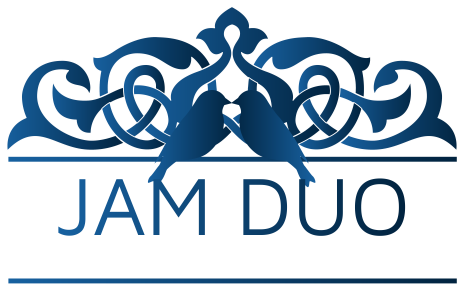Pachelbel’s Canon in D is perhaps our most requested classical piece of music for the entrance of the bride at weddings. Regardless of whether we are playing for a civil ceremony or a church wedding, the enduring popularity of Canon in D is something which prevails at a high percentage of weddings we are part of.
In it’s original form, it’s as simple as three violins, one cello, and eight bars of music repeated 28 times – but Johann Pachelbel’s Canon in D has risen in popularity to become one of the best-known pieces of classical music ever written.
The video above was recorded whilst we were playing for a wedding in Harrogate. Rather than employing videographers and making a fancy video full of cinematic effects, we decided to keep this one straightforward and to the point. It is simply recorded on Jules’ iPhone. There are no edits or effects. The aim was to show you how we look and more importantly how we sound when we play at your wedding.
Popular Wedding Piece
It’s hard to imagine a time when this piece wasn’t a firm favourite at weddings, but in reality, not very much is known about Pachelbel’s most famous piece. We don’t even know exactly when it was composed, although it’s thought it was around 1680.
There are a few unsubstantiated claims that the music was written for the wedding of Bach’s brother, Johann Christoph, on 23 October 1694, but this is pretty unlikely.
History of the Canon
Like his other works, Pachelbel’s Canon went out of style, and remained in obscurity for centuries. A 1968 arrangement and recording of it by the Jean-François Paillard chamber orchestra gained popularity over the next decade
The Canon’s popularity snowballed in the 1970s, after French conductor Jean-François Paillard made a recording. Since then, the music has been recorded hundreds of times, and the iconic harmony has made its way into pop songs, films, and adverts.
The Canon (without the accompanying gigue) was first published in 1919 by scholar Gustav Beckmann, who included the score in his article on Pachelbel’s chamber music. His research was inspired and supported by early music scholar and editor Max Seiffert, who in 1929 published his arrangement of the Canon and Gigue in his Organum series.
However, that edition contained numerous articulation marks and dynamics not in the original score. Furthermore, Seiffert provided tempi he considered right for the piece, but that were not supported by later research. The Canon was first recorded in 1940 by Arthur Fiedler.
Structure of the Music
Perhaps the most recognisable element of the canon is the ground bass. The bass voice repeats the same two-bar line throughout the piece.
The common musical term for this is ostinato, or ground bass (see the example below).

The eight chords suggested by the bass are represented in the table below:
| No. | Chord | Scale degree | Roman numeral |
|---|---|---|---|
| 1 | D major | tonic | I |
| 2 | A major | dominant | V |
| 3 | B minor | submediant | vi |
| 4 | F♯ minor | mediant | iii |
| 5 | G major | subdominant | IV |
| 6 | D major | tonic | I |
| 7 | G major | subdominant | IV |
| 8 | A major | dominant | V |
The eight chords of this progression follow a sequential pattern known as the Romanesca. This progression has been identified as a common seventeenth- and eighteenth-century schema by Robert Gjerdingen.
Influence on popular music
In 2002, pop music producer Pete Waterman described Canon in D as “almost the godfather of pop music because we’ve all used that in our own ways for the past 30 years”. He also said that Kylie Minogue’s 1988 UK number one hit single “I Should Be So Lucky”, which Waterman co-wrote and co-produced, was inspired by Canon in D. The Farm’s 1990 single “All Together Now” has its chord sequence lifted directly from Pachelbel’s Canon.
The Pet Shop Boys’ 1993 cover of “Go West” played up that song’s resemblance to both Pachelbel’s Canon and the Soviet Anthem. Coolio’s 1997 “C U When U Get There” is built around a sample of the piece. Other songs that make use of the Pachelbel’s Canon chord progression include “Streets of London” by Ralph McTell (1974)and “Don’t Look Back in Anger” by Oasis (1996) (though with a variation at the end), while Maroon 5 used the harmonic sequence of Pachelbel’s Canon for their 2019 single “Memories”.
No wonder then that JAM Duo are regularly asked to play Pachelbel’s Canon in D at weddings. Whilst it was originally written for a string quartet, we think it sounds even more beautiful arranged for Cello and Piano.
JAM Duo at your Wedding
If you would like to discuss the option of JAM Duo providing music at your wedding then we would love to hear from you. The best way to get in touch is via our Contact Page. Or you can email and call us directly using the information at the top of this page.



